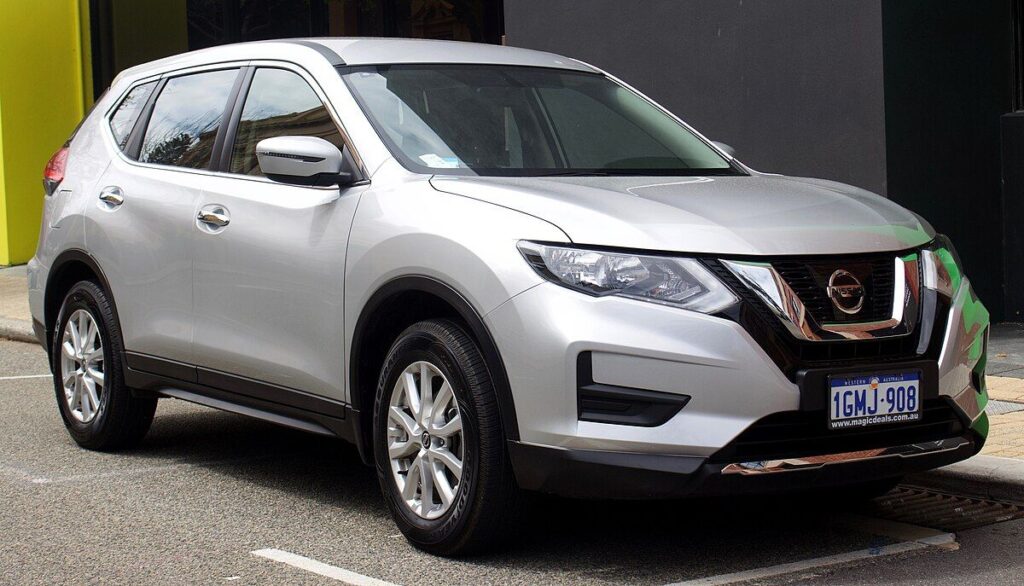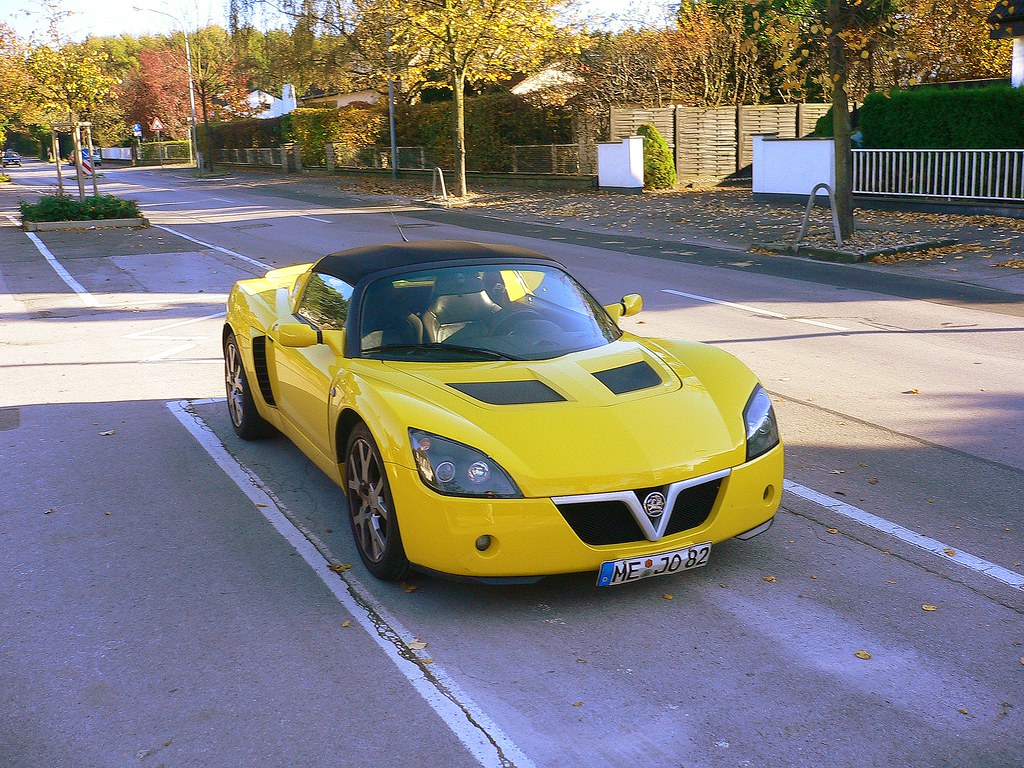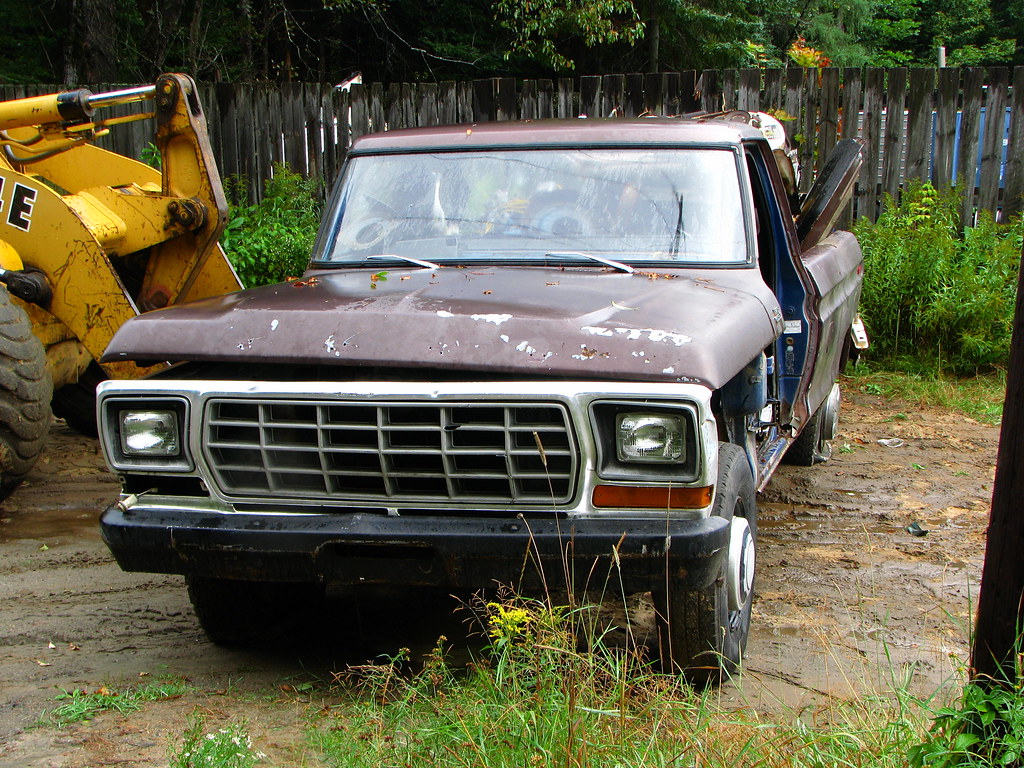
For decades, the Ford F-Series has been more than just a truck; it’s a cornerstone of American industry, a symbol of durability, and a vehicle deeply woven into the fabric of countless working lives and family adventures. With over 40 million units sold by January 2022 and a reign as America’s best-selling pickup since 1977, its presence is undeniable. Yet, behind its colossal success lie fascinating stories and historical turning points that even the most dedicated gearheads might not fully appreciate.
From its humble beginnings in the post-war era to its constant evolution as a technological leader, the F-Series has consistently adapted, innovated, and sometimes even experimented in ways that have defined the entire pickup truck segment. Its journey is a testament to Ford’s commitment to utility, performance, and understanding the diverse needs of its customers across the continent.
Join us as we take a deep dive into the archives, unearthing some of the lesser-known but incredibly impactful facts that have shaped the Ford F-Series into the automotive legend it is today. These historical nuggets provide a richer understanding of the ingenuity and foresight that have kept the F-Series at the top for generations, showcasing that its history is just as compelling as its current market dominance.
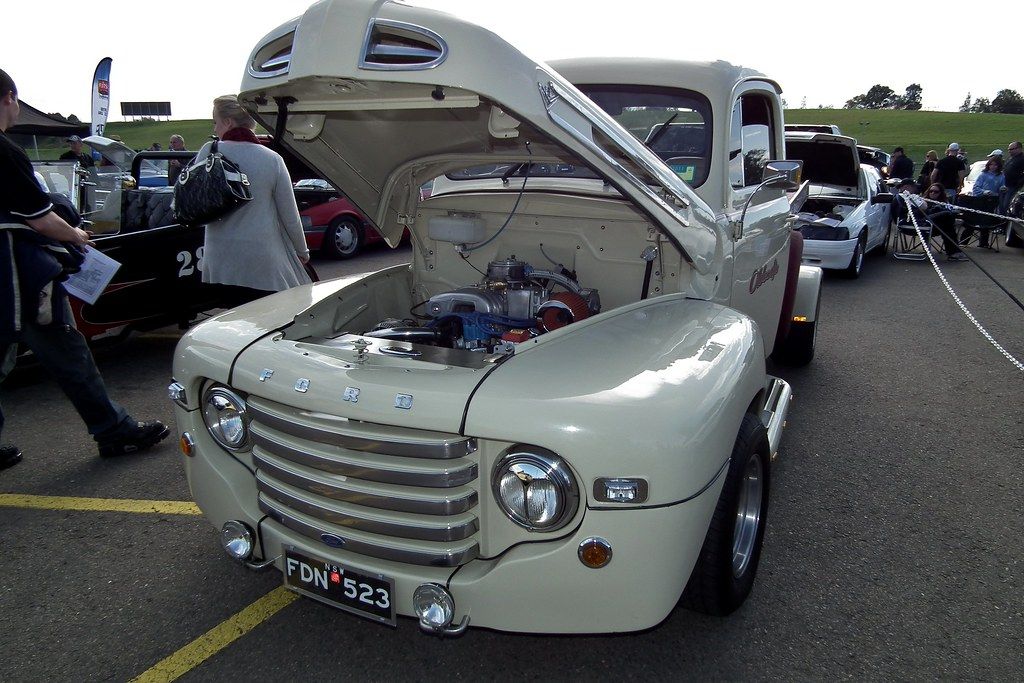
1. **F-Series Origin and Initial Versatility: The 1948 ‘Bonus-Built’**When the Ford F-Series first rolled off the assembly lines in 1948, it wasn’t just another vehicle; it was a fundamental shift for Ford’s truck division. Dubbed the ‘Bonus-Built’ by the company, this first generation was a deliberate departure, designed from the ground up as a dedicated truck platform. It specifically replaced Ford’s previous car-based pickup line, which had been introduced in 1942, signaling a new era of purpose-built utility vehicles.
This initial F-Series was remarkable for its sheer breadth of offerings, immediately catering to an incredibly diverse range of customers. Ford recognized the varied demands of the post-war economy, from farmers needing rugged haulers to businesses requiring specialized delivery vehicles. This generation wasn’t a one-size-fits-all solution; it was a comprehensive lineup designed to meet specific professional and commercial requirements.
The versatility of the 1948 F-Series was astonishing, being sold in eight different weight ratings right from the start. Beyond the standard pickup configuration, customers could choose from panel truck, parcel delivery variants, cab-over engine (COE) designs, conventional trucks, and even dedicated school-bus chassis body styles. This wide array demonstrated Ford’s early understanding that the F-Series would be a multi-faceted workhorse, establishing a precedent for adaptability that continues to this day.
Car Model Information: 2018 Ford F-150 XL
Name: Ford F-Series
Caption: 2022 Ford F-150 Lariat Luxury
Manufacturer: Ford Motor Company
Aka: Ford Lobo (Mexico, 1992–present)
Production: 1948–present
Class: Pickup truck#Full-size pickup truck
Layout: Front-engine, rear-wheel-drive layout,rear-wheel drive
Predecessor: 1941 Ford
Categories: All-wheel-drive vehicles, All Wikipedia articles written in American English, All articles that may contain original research, All articles with unsourced statements, Articles that may contain original research from September 2020
Summary: The Ford F-Series is a series of light-duty trucks marketed and manufactured by the Ford Motor Company since model year 1948 as a range of full-sized pickup trucks — positioned between Ford’s Ranger and Super Duty pickup trucks. Alongside the F-150 (introduced in 1975), the F-Series also includes the Super Duty series (introduced in 1999), which includes the heavier-duty F-250 through F-450 pickups, F-450/F-550 chassis cabs, and F-600/F-650/F-750 Class 6–8 commercial trucks.
The most popular version of the model line is the F-150 pickup truck, currently in its fourteenth generation (introduced for the 2021 model year). From 1953 to 1983, the entry-level F-Series pickup was the 1⁄2 ton F-100. Starting in 1984, the F-150 became the entry-level. The F-150 has a long-running high-performance off-road trim level introduced for 2010, the (SVT) Raptor currently consisting of three generations. Production of the F-150 SVT Raptor ended in 2014 and was succeeded in 2017 by a new F-150 Raptor, which is based on the thirteenth and fourteenth generation F-150.
The F-Series trucks have been developed into a wide range of design configurations. Alongside medium-duty trucks and “Big Job” conventional trucks (the forerunners of the Ford L-series), the model line has been marketed as a chassis-cab truck and a panel van (a predecessor of the Ford E-Series). The F-Series has served as the platform for various full-sized Ford SUVs, including the Ford Bronco, Ford Expedition/Lincoln Navigator, and Ford Excursion. The F-Series has been marketed by its three North American brands: by Mercury as the M-Series (in Canada from 1948 to 1968), and by Lincoln in the 2000s, as the Blackwood and the later Mark LT (2010s for the latter in Mexico only).
Since 1977, the F-Series has remained the best-selling pickup truck line in the United States; it has been the best-selling vehicle overall since 1981. The F-Series has been the best-selling truck in Canada for over 50 years. As of the 2018 model year, the F-Series generated $41 billion (~$50.3 billion in 2024) in annual revenue for Ford. By January 2022, the F-Series models have sold over 40 million units. Currently, Ford manufactures the F-Series in four facilities in the United States.
Get more information about: Ford F-Series
Buying a high-performing used car >>>
Brand: Ford Model: F-Series
Price: $23,500 Mileage: 30,684 mi.
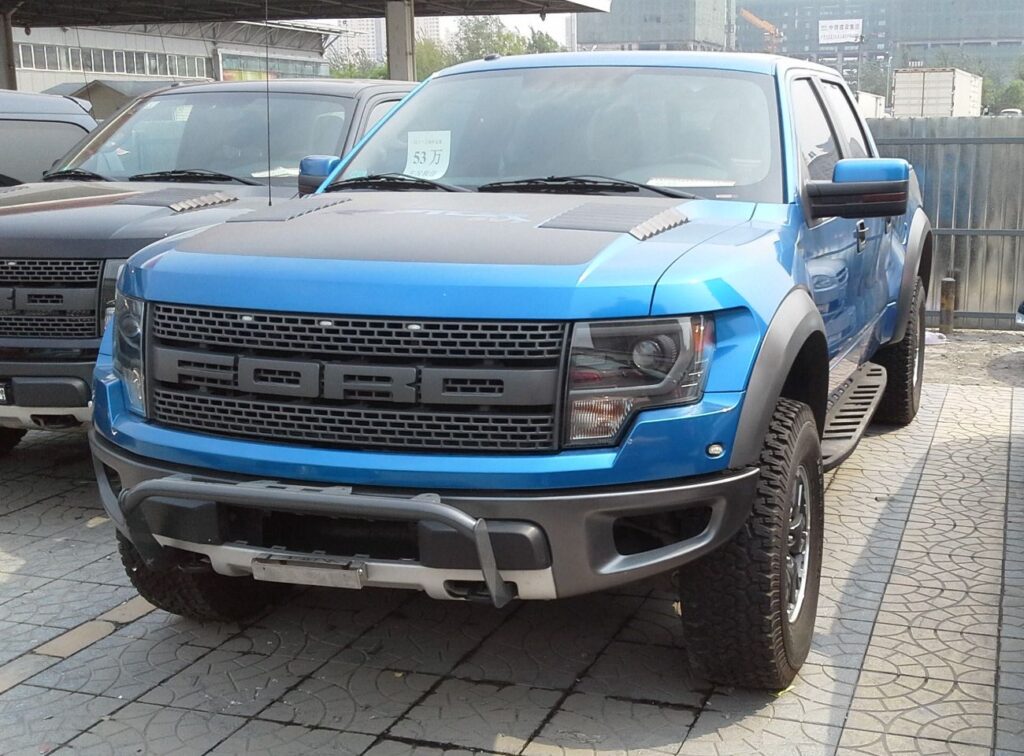
2. **The Strategic Shift to Three-Digit Nomenclature in 1953**For the 1953 model year, Ford introduced the second generation of its F-Series trucks, bringing with it a host of improvements including increased dimensions, more potent engines, and an updated chassis. While these enhancements were certainly notable, a seemingly small change in nomenclature would prove to be one of the most enduring legacies of this generation. Ford decided to expand the F-Series model designation to a more structured three-number system, a practice that remains in use today.
This pivotal decision saw the half-ton F-1, the original entry-level model, rebranded as the F-100. Similarly, the F-2 and F-3 models were combined and consolidated under the new 3⁄4-ton F-250 designation. Completing the initial three-digit lineup, the F-4 was reclassified as the one-ton F-350. This standardization brought clarity and a hierarchical structure to the F-Series lineup, making it easier for customers to understand the capability and capacity of each model.
Beyond these light-duty designations, the conventional F-Series trucks, designed for heavier work, were also given a three-digit system, ranging from F-500 to F-900. The cab-over engine chassis models were separately renamed C-Series trucks, further refining the product segmentation. Additionally, 1956 saw a significant cab revision, introducing features like a wraparound windshield, new doors, a redesigned dashboard, and an optional panoramic rear window, along with the availability of seat belts as an option, aligning the F-Series with advances seen in Ford’s passenger car lineup.
Car Model Information: 2018 Ford F-150 XL
Name: Ford F-Series
Caption: 2022 Ford F-150 Lariat Luxury
Manufacturer: Ford Motor Company
Aka: Ford Lobo (Mexico, 1992–present)
Production: 1948–present
Class: Pickup truck#Full-size pickup truck
Layout: Front-engine, rear-wheel-drive layout,rear-wheel drive
Predecessor: 1941 Ford
Categories: All-wheel-drive vehicles, All Wikipedia articles written in American English, All articles that may contain original research, All articles with unsourced statements, Articles that may contain original research from September 2020
Summary: The Ford F-Series is a series of light-duty trucks marketed and manufactured by the Ford Motor Company since model year 1948 as a range of full-sized pickup trucks — positioned between Ford’s Ranger and Super Duty pickup trucks. Alongside the F-150 (introduced in 1975), the F-Series also includes the Super Duty series (introduced in 1999), which includes the heavier-duty F-250 through F-450 pickups, F-450/F-550 chassis cabs, and F-600/F-650/F-750 Class 6–8 commercial trucks.
The most popular version of the model line is the F-150 pickup truck, currently in its fourteenth generation (introduced for the 2021 model year). From 1953 to 1983, the entry-level F-Series pickup was the 1⁄2 ton F-100. Starting in 1984, the F-150 became the entry-level. The F-150 has a long-running high-performance off-road trim level introduced for 2010, the (SVT) Raptor currently consisting of three generations. Production of the F-150 SVT Raptor ended in 2014 and was succeeded in 2017 by a new F-150 Raptor, which is based on the thirteenth and fourteenth generation F-150.
The F-Series trucks have been developed into a wide range of design configurations. Alongside medium-duty trucks and “Big Job” conventional trucks (the forerunners of the Ford L-series), the model line has been marketed as a chassis-cab truck and a panel van (a predecessor of the Ford E-Series). The F-Series has served as the platform for various full-sized Ford SUVs, including the Ford Bronco, Ford Expedition/Lincoln Navigator, and Ford Excursion. The F-Series has been marketed by its three North American brands: by Mercury as the M-Series (in Canada from 1948 to 1968), and by Lincoln in the 2000s, as the Blackwood and the later Mark LT (2010s for the latter in Mexico only).
Since 1977, the F-Series has remained the best-selling pickup truck line in the United States; it has been the best-selling vehicle overall since 1981. The F-Series has been the best-selling truck in Canada for over 50 years. As of the 2018 model year, the F-Series generated $41 billion (~$50.3 billion in 2024) in annual revenue for Ford. By January 2022, the F-Series models have sold over 40 million units. Currently, Ford manufactures the F-Series in four facilities in the United States.
Get more information about: Ford F-Series
Buying a high-performing used car >>>
Brand: Ford Model: F-Series
Price: $23,500 Mileage: 30,684 mi.
Read more about: Beyond the Show-Off: 12 Cars That Make People Assume You’re Rich Immediately
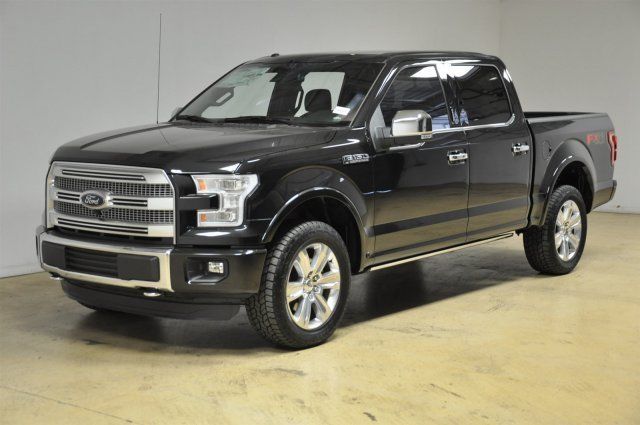
3. **The Experimental Unibody Design (1961-1963)**With the introduction of the fourth-generation F-Series in 1961, Ford unveiled a dramatically new style of pickup that was both longer and lower than its predecessors, boasting increased dimensions and a wider array of engine and gearbox choices. However, one of the most daring and ultimately short-lived innovations of this era was the optional unibody design, available on models from 1961 into part of the 1963 model year.
This unique configuration saw the Styleside bed integrated directly with the cab, with the pickup bed stampings welded directly to the cab before both assemblies were mounted to the frame. The design was conceived with practical benefits in mind, primarily aimed at simplifying the assembly and paint process in the factory. It mirrored a similar construction approach used in vehicles like the Ford Ranchero, which blended car-like comfort with truck utility.
Despite the manufacturing efficiencies, the unibody F-Series proved to be largely unpopular with the buying public. Truck owners, particularly those who relied on their vehicles for heavy-duty work, often preferred the traditional separate cab and bed configuration for its perceived robustness, ease of repair, and greater customization potential. Following its poor market reception, Ford made the decision to withdraw the unibody pickup bed design during the 1963 model year, marking it as a bold but ultimately unsuccessful experiment in the F-Series’ extensive history.
Car Model Information: 2018 Ford F-150 XL
Name: Ford F-Series
Caption: 2022 Ford F-150 Lariat Luxury
Manufacturer: Ford Motor Company
Aka: Ford Lobo (Mexico, 1992–present)
Production: 1948–present
Class: Pickup truck#Full-size pickup truck
Layout: Front-engine, rear-wheel-drive layout,rear-wheel drive
Predecessor: 1941 Ford
Categories: All-wheel-drive vehicles, All Wikipedia articles written in American English, All articles that may contain original research, All articles with unsourced statements, Articles that may contain original research from September 2020
Summary: The Ford F-Series is a series of light-duty trucks marketed and manufactured by the Ford Motor Company since model year 1948 as a range of full-sized pickup trucks — positioned between Ford’s Ranger and Super Duty pickup trucks. Alongside the F-150 (introduced in 1975), the F-Series also includes the Super Duty series (introduced in 1999), which includes the heavier-duty F-250 through F-450 pickups, F-450/F-550 chassis cabs, and F-600/F-650/F-750 Class 6–8 commercial trucks.
The most popular version of the model line is the F-150 pickup truck, currently in its fourteenth generation (introduced for the 2021 model year). From 1953 to 1983, the entry-level F-Series pickup was the 1⁄2 ton F-100. Starting in 1984, the F-150 became the entry-level. The F-150 has a long-running high-performance off-road trim level introduced for 2010, the (SVT) Raptor currently consisting of three generations. Production of the F-150 SVT Raptor ended in 2014 and was succeeded in 2017 by a new F-150 Raptor, which is based on the thirteenth and fourteenth generation F-150.
The F-Series trucks have been developed into a wide range of design configurations. Alongside medium-duty trucks and “Big Job” conventional trucks (the forerunners of the Ford L-series), the model line has been marketed as a chassis-cab truck and a panel van (a predecessor of the Ford E-Series). The F-Series has served as the platform for various full-sized Ford SUVs, including the Ford Bronco, Ford Expedition/Lincoln Navigator, and Ford Excursion. The F-Series has been marketed by its three North American brands: by Mercury as the M-Series (in Canada from 1948 to 1968), and by Lincoln in the 2000s, as the Blackwood and the later Mark LT (2010s for the latter in Mexico only).
Since 1977, the F-Series has remained the best-selling pickup truck line in the United States; it has been the best-selling vehicle overall since 1981. The F-Series has been the best-selling truck in Canada for over 50 years. As of the 2018 model year, the F-Series generated $41 billion (~$50.3 billion in 2024) in annual revenue for Ford. By January 2022, the F-Series models have sold over 40 million units. Currently, Ford manufactures the F-Series in four facilities in the United States.
Get more information about: Ford F-Series
Buying a high-performing used car >>>
Brand: Ford Model: F-Series
Price: $23,500 Mileage: 30,684 mi.
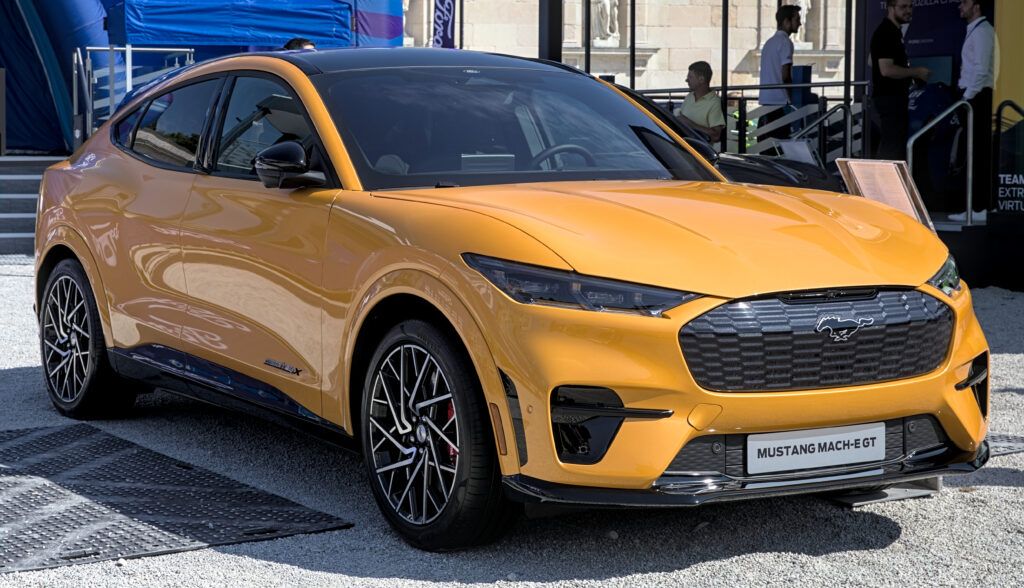
4. **The Enduring Legacy of the ‘Twin I-Beam’ Front Suspension (Introduced 1965)**In 1965, the fourth-generation F-Series received a significant mid-cycle redesign that introduced a completely new platform, representing a major engineering leap for Ford. Among the most impactful innovations debuted at this time was the revolutionary ‘Twin I-Beam’ front suspension. This design offered a substantial improvement over previous setups, enhancing ride quality, handling, and durability, which were crucial for both work and increasingly, personal use.
The ‘Twin I-Beam’ system featured two independent I-beam axles, allowing each front wheel to react to road imperfections independently. This not only provided a smoother and more controlled ride but also improved the truck’s ability to maintain wheel alignment and stability under varying loads and road conditions. It was a sophisticated solution for its time, demonstrating Ford’s commitment to advanced automotive engineering in its truck line.
What makes the ‘Twin I-Beam’ truly remarkable is its incredible longevity and impact. This innovative front suspension system continued to be used on the F-150 until 1996, spanning over three decades and multiple F-Series generations. Furthermore, it is still utilized today in the F-250 and F-350 4×2 models, showcasing its inherent robustness and effective design for heavy-duty applications. Few automotive engineering solutions have demonstrated such a prolonged and successful tenure, cementing its place as a cornerstone of F-Series history.
Car Model Information: 2018 Ford F-150 XL
Name: Ford F-Series
Caption: 2022 Ford F-150 Lariat Luxury
Manufacturer: Ford Motor Company
Aka: Ford Lobo (Mexico, 1992–present)
Production: 1948–present
Class: Pickup truck#Full-size pickup truck
Layout: Front-engine, rear-wheel-drive layout,rear-wheel drive
Predecessor: 1941 Ford
Categories: All-wheel-drive vehicles, All Wikipedia articles written in American English, All articles that may contain original research, All articles with unsourced statements, Articles that may contain original research from September 2020
Summary: The Ford F-Series is a series of light-duty trucks marketed and manufactured by the Ford Motor Company since model year 1948 as a range of full-sized pickup trucks — positioned between Ford’s Ranger and Super Duty pickup trucks. Alongside the F-150 (introduced in 1975), the F-Series also includes the Super Duty series (introduced in 1999), which includes the heavier-duty F-250 through F-450 pickups, F-450/F-550 chassis cabs, and F-600/F-650/F-750 Class 6–8 commercial trucks.
The most popular version of the model line is the F-150 pickup truck, currently in its fourteenth generation (introduced for the 2021 model year). From 1953 to 1983, the entry-level F-Series pickup was the 1⁄2 ton F-100. Starting in 1984, the F-150 became the entry-level. The F-150 has a long-running high-performance off-road trim level introduced for 2010, the (SVT) Raptor currently consisting of three generations. Production of the F-150 SVT Raptor ended in 2014 and was succeeded in 2017 by a new F-150 Raptor, which is based on the thirteenth and fourteenth generation F-150.
The F-Series trucks have been developed into a wide range of design configurations. Alongside medium-duty trucks and “Big Job” conventional trucks (the forerunners of the Ford L-series), the model line has been marketed as a chassis-cab truck and a panel van (a predecessor of the Ford E-Series). The F-Series has served as the platform for various full-sized Ford SUVs, including the Ford Bronco, Ford Expedition/Lincoln Navigator, and Ford Excursion. The F-Series has been marketed by its three North American brands: by Mercury as the M-Series (in Canada from 1948 to 1968), and by Lincoln in the 2000s, as the Blackwood and the later Mark LT (2010s for the latter in Mexico only).
Since 1977, the F-Series has remained the best-selling pickup truck line in the United States; it has been the best-selling vehicle overall since 1981. The F-Series has been the best-selling truck in Canada for over 50 years. As of the 2018 model year, the F-Series generated $41 billion (~$50.3 billion in 2024) in annual revenue for Ford. By January 2022, the F-Series models have sold over 40 million units. Currently, Ford manufactures the F-Series in four facilities in the United States.
Get more information about: Ford F-Series
Buying a high-performing used car >>>
Brand: Ford Model: F-Series
Price: $23,500 Mileage: 30,684 mi.
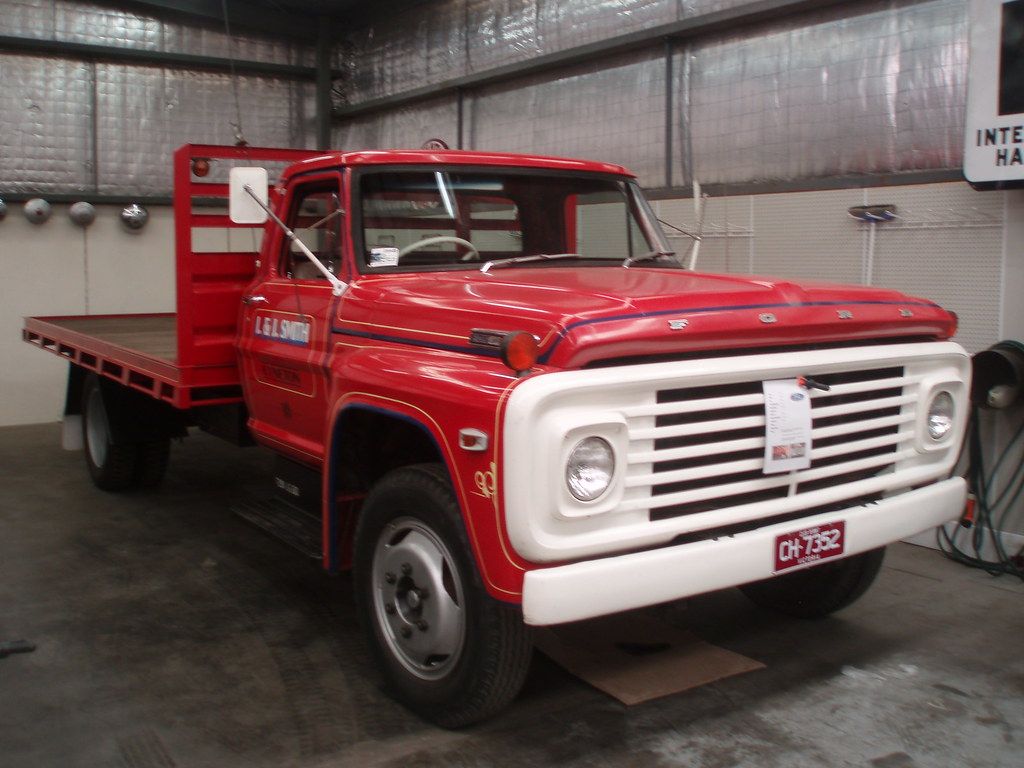
5. **The F-150’s Strategic Birth to Bypass Emissions Regulations (1975)**The sixth-generation F-Series, introduced in 1973, brought with it significant modernization and refinements, including advancements like front disc brakes, increased cabin dimensions, and full double-wall bed construction. However, a particularly interesting development in this era was the strategic introduction of a completely new model, the F-150, in 1975. This wasn’t merely a new trim level; it was a response to evolving regulatory challenges.
The F-150 was deliberately positioned in between the F-100 and the F-250. Its primary purpose, a detail often overlooked, was to navigate and avoid certain emission control restrictions that were becoming increasingly stringent during the mid-1970s. By slightly increasing the Gross Vehicle Weight Rating (GVWR) of this new ‘heavy half-ton’ truck, Ford was able to classify it differently for regulatory purposes, thus sidestepping some of the more restrictive emissions standards applied to lighter trucks at the time.
This calculated move allowed Ford to offer a more capable and less constrained vehicle to consumers during a period of tightening regulations. The F-150 quickly gained traction, becoming immensely popular and eventually surpassing the F-100 as the entry-level F-Series pickup starting in 1984. Its origin story is a fascinating example of how regulatory environments can subtly yet profoundly influence automotive product development and, in this case, contribute to the birth of an iconic nameplate that would define an entire segment.
Car Model Information: 2018 Ford F-150 XL
Name: Ford F-Series
Caption: 2022 Ford F-150 Lariat Luxury
Manufacturer: Ford Motor Company
Aka: Ford Lobo (Mexico, 1992–present)
Production: 1948–present
Class: Pickup truck#Full-size pickup truck
Layout: Front-engine, rear-wheel-drive layout,rear-wheel drive
Predecessor: 1941 Ford
Categories: All-wheel-drive vehicles, All Wikipedia articles written in American English, All articles that may contain original research, All articles with unsourced statements, Articles that may contain original research from September 2020
Summary: The Ford F-Series is a series of light-duty trucks marketed and manufactured by the Ford Motor Company since model year 1948 as a range of full-sized pickup trucks — positioned between Ford’s Ranger and Super Duty pickup trucks. Alongside the F-150 (introduced in 1975), the F-Series also includes the Super Duty series (introduced in 1999), which includes the heavier-duty F-250 through F-450 pickups, F-450/F-550 chassis cabs, and F-600/F-650/F-750 Class 6–8 commercial trucks.
The most popular version of the model line is the F-150 pickup truck, currently in its fourteenth generation (introduced for the 2021 model year). From 1953 to 1983, the entry-level F-Series pickup was the 1⁄2 ton F-100. Starting in 1984, the F-150 became the entry-level. The F-150 has a long-running high-performance off-road trim level introduced for 2010, the (SVT) Raptor currently consisting of three generations. Production of the F-150 SVT Raptor ended in 2014 and was succeeded in 2017 by a new F-150 Raptor, which is based on the thirteenth and fourteenth generation F-150.
The F-Series trucks have been developed into a wide range of design configurations. Alongside medium-duty trucks and “Big Job” conventional trucks (the forerunners of the Ford L-series), the model line has been marketed as a chassis-cab truck and a panel van (a predecessor of the Ford E-Series). The F-Series has served as the platform for various full-sized Ford SUVs, including the Ford Bronco, Ford Expedition/Lincoln Navigator, and Ford Excursion. The F-Series has been marketed by its three North American brands: by Mercury as the M-Series (in Canada from 1948 to 1968), and by Lincoln in the 2000s, as the Blackwood and the later Mark LT (2010s for the latter in Mexico only).
Since 1977, the F-Series has remained the best-selling pickup truck line in the United States; it has been the best-selling vehicle overall since 1981. The F-Series has been the best-selling truck in Canada for over 50 years. As of the 2018 model year, the F-Series generated $41 billion (~$50.3 billion in 2024) in annual revenue for Ford. By January 2022, the F-Series models have sold over 40 million units. Currently, Ford manufactures the F-Series in four facilities in the United States.
Get more information about: Ford F-Series
Buying a high-performing used car >>>
Brand: Ford Model: F-150
Price: $23,500 Mileage: 30,684 mi.

6. **Ford’s First Production of Factory Four-Wheel-Drive Pickups (1959)**The third generation of the F-Series, introduced in 1957, marked a significant modernization and redesign for Ford’s truck line. This era brought about aesthetic changes such as front fenders integrated into the body, with the new ‘Styleside’ bed extending the smooth lines seamlessly to the rear. However, it was two years into this generation’s production that a crucial functional advancement forever changed the capabilities of Ford trucks and indeed, the industry at large.
In 1959, Ford achieved a significant milestone by beginning its first production of factory four-wheel-drive pickups. Prior to this, four-wheel-drive capability was often a specialized aftermarket conversion, requiring truck owners to seek out third-party upfitters to add the robust traction system. This meant inconsistent quality, varying warranties, and a more complex purchasing process for those who needed enhanced off-road or all-weather performance.
By integrating 4WD directly into the factory production line, Ford offered consumers a reliable, warranty-backed solution straight from the dealership. This move legitimized 4WD as a mainstream option for truck buyers, opening up new possibilities for work and recreation in challenging terrains. It underscored Ford’s commitment to offering purpose-built solutions, recognizing the growing demand for vehicles that could tackle more than just paved roads, a philosophy that continues to drive the F-Series’ diverse offerings today.
Car Model Information: 2018 Ford F-150 XL
Name: Ford F-Series
Caption: 2022 Ford F-150 Lariat Luxury
Manufacturer: Ford Motor Company
Aka: Ford Lobo (Mexico, 1992–present)
Production: 1948–present
Class: Pickup truck#Full-size pickup truck
Layout: Front-engine, rear-wheel-drive layout,rear-wheel drive
Predecessor: 1941 Ford
Categories: All-wheel-drive vehicles, All Wikipedia articles written in American English, All articles that may contain original research, All articles with unsourced statements, Articles that may contain original research from September 2020
Summary: The Ford F-Series is a series of light-duty trucks marketed and manufactured by the Ford Motor Company since model year 1948 as a range of full-sized pickup trucks — positioned between Ford’s Ranger and Super Duty pickup trucks. Alongside the F-150 (introduced in 1975), the F-Series also includes the Super Duty series (introduced in 1999), which includes the heavier-duty F-250 through F-450 pickups, F-450/F-550 chassis cabs, and F-600/F-650/F-750 Class 6–8 commercial trucks.
The most popular version of the model line is the F-150 pickup truck, currently in its fourteenth generation (introduced for the 2021 model year). From 1953 to 1983, the entry-level F-Series pickup was the 1⁄2 ton F-100. Starting in 1984, the F-150 became the entry-level. The F-150 has a long-running high-performance off-road trim level introduced for 2010, the (SVT) Raptor currently consisting of three generations. Production of the F-150 SVT Raptor ended in 2014 and was succeeded in 2017 by a new F-150 Raptor, which is based on the thirteenth and fourteenth generation F-150.
The F-Series trucks have been developed into a wide range of design configurations. Alongside medium-duty trucks and “Big Job” conventional trucks (the forerunners of the Ford L-series), the model line has been marketed as a chassis-cab truck and a panel van (a predecessor of the Ford E-Series). The F-Series has served as the platform for various full-sized Ford SUVs, including the Ford Bronco, Ford Expedition/Lincoln Navigator, and Ford Excursion. The F-Series has been marketed by its three North American brands: by Mercury as the M-Series (in Canada from 1948 to 1968), and by Lincoln in the 2000s, as the Blackwood and the later Mark LT (2010s for the latter in Mexico only).
Since 1977, the F-Series has remained the best-selling pickup truck line in the United States; it has been the best-selling vehicle overall since 1981. The F-Series has been the best-selling truck in Canada for over 50 years. As of the 2018 model year, the F-Series generated $41 billion (~$50.3 billion in 2024) in annual revenue for Ford. By January 2022, the F-Series models have sold over 40 million units. Currently, Ford manufactures the F-Series in four facilities in the United States.
Get more information about: Ford F-Series
Buying a high-performing used car >>>
Brand: Ford Model: F-Series
Price: $23,500 Mileage: 30,684 mi.
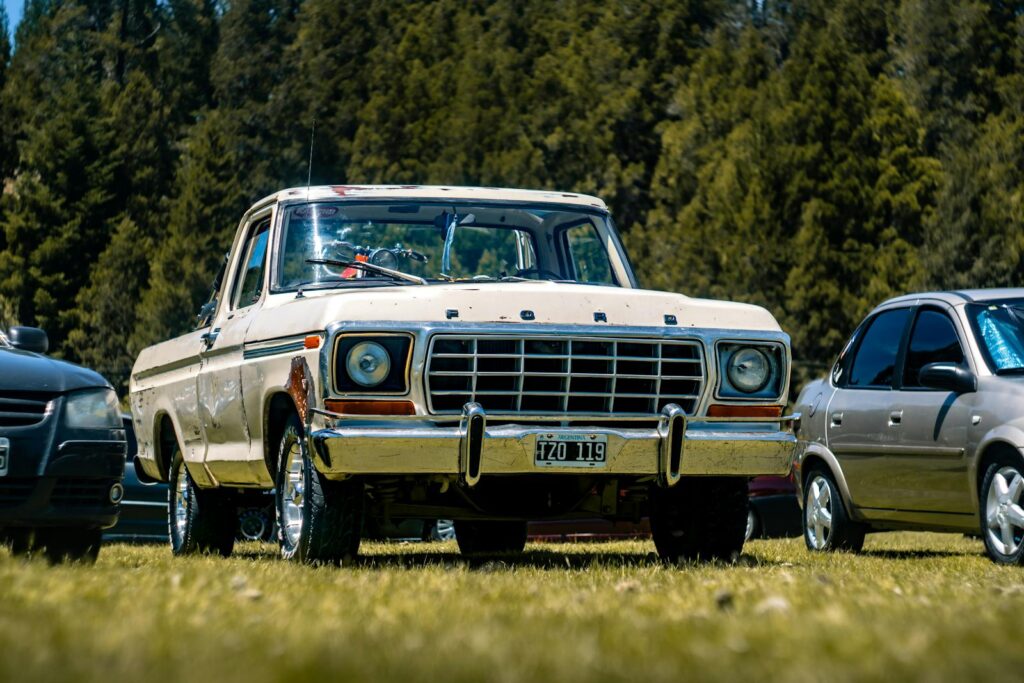
7. **The F-Series as the Robust Platform for Full-Sized Ford SUVs**The enduring strength and versatility of the Ford F-Series chassis extended far beyond its primary role as a pickup truck. Over its long history, the F-Series has been developed into an incredibly wide range of design configurations, including medium-duty trucks, ‘Big Job’ conventional trucks, chassis-cab variants, and even panel vans that foreshadowed the Ford E-Series. This adaptability speaks volumes about the inherent robust engineering of its underlying platform.
Crucially, this robust architecture made the F-Series the ideal foundational platform for several of Ford’s most popular and enduring full-sized SUVs. The heavy-duty frame and powertrain components provided the necessary strength and capability to support larger, family-oriented vehicles that still required significant towing and hauling prowess. This cross-pollination allowed Ford to leverage its successful truck engineering to create compelling passenger vehicles.
Among the most notable SUVs to share the F-Series platform are the iconic Ford Bronco, a legendary off-road vehicle that has seen multiple iterations, and the highly popular Ford Expedition, which, along with its luxury Lincoln Navigator counterpart, continues to be a staple in the full-size SUV market. Even the short-lived but memorable Ford Excursion utilized this proven foundation. This lineage highlights the F-Series’ unparalleled versatility and its integral role in shaping not just Ford’s truck lineup, but a significant portion of its full-size utility vehicle offerings for decades.
Having explored the foundational innovations and early adaptations that cemented the Ford F-Series’ place in automotive history, we now turn our attention to the pivotal advancements that propelled it into the modern era. From sophisticated engine technologies and specialized performance models to the emergence of luxury trims and revolutionary material science, the F-Series has consistently pushed boundaries, redefining what a pickup truck can be. These next seven facts unveil the engineering prowess and strategic foresight that kept Ford at the forefront of the truck segment, ensuring its legacy of capability and innovation endures.
Car Model Information: 2024 Ford F-150 XLT
Name: Ford F-Series
Caption: 2022 Ford F-150 Lariat Luxury
Manufacturer: Ford Motor Company
Aka: Ford Lobo (Mexico, 1992–present)
Production: 1948–present
Class: Pickup truck#Full-size pickup truck
Layout: Front-engine, rear-wheel-drive layout,rear-wheel drive
Predecessor: 1941 Ford
Categories: All-wheel-drive vehicles, All Wikipedia articles written in American English, All articles that may contain original research, All articles with unsourced statements, Articles that may contain original research from September 2020
Summary: The Ford F-Series is a series of light-duty trucks marketed and manufactured by the Ford Motor Company since model year 1948 as a range of full-sized pickup trucks — positioned between Ford’s Ranger and Super Duty pickup trucks. Alongside the F-150 (introduced in 1975), the F-Series also includes the Super Duty series (introduced in 1999), which includes the heavier-duty F-250 through F-450 pickups, F-450/F-550 chassis cabs, and F-600/F-650/F-750 Class 6–8 commercial trucks.
The most popular version of the model line is the F-150 pickup truck, currently in its fourteenth generation (introduced for the 2021 model year). From 1953 to 1983, the entry-level F-Series pickup was the 1⁄2 ton F-100. Starting in 1984, the F-150 became the entry-level. The F-150 has a long-running high-performance off-road trim level introduced for 2010, the (SVT) Raptor currently consisting of three generations. Production of the F-150 SVT Raptor ended in 2014 and was succeeded in 2017 by a new F-150 Raptor, which is based on the thirteenth and fourteenth generation F-150.
The F-Series trucks have been developed into a wide range of design configurations. Alongside medium-duty trucks and “Big Job” conventional trucks (the forerunners of the Ford L-series), the model line has been marketed as a chassis-cab truck and a panel van (a predecessor of the Ford E-Series). The F-Series has served as the platform for various full-sized Ford SUVs, including the Ford Bronco, Ford Expedition/Lincoln Navigator, and Ford Excursion. The F-Series has been marketed by its three North American brands: by Mercury as the M-Series (in Canada from 1948 to 1968), and by Lincoln in the 2000s, as the Blackwood and the later Mark LT (2010s for the latter in Mexico only).
Since 1977, the F-Series has remained the best-selling pickup truck line in the United States; it has been the best-selling vehicle overall since 1981. The F-Series has been the best-selling truck in Canada for over 50 years. As of the 2018 model year, the F-Series generated $41 billion (~$50.3 billion in 2024) in annual revenue for Ford. By January 2022, the F-Series models have sold over 40 million units. Currently, Ford manufactures the F-Series in four facilities in the United States.
Get more information about: Ford F-Series
Buying a high-performing used car >>>
Brand: Ford Model: F-Series
Price: $37,999 Mileage: 54,054 mi.
Read more about: 2025 SUVs with Full-Size Spares: Your Guide to Uncompromised Preparedness
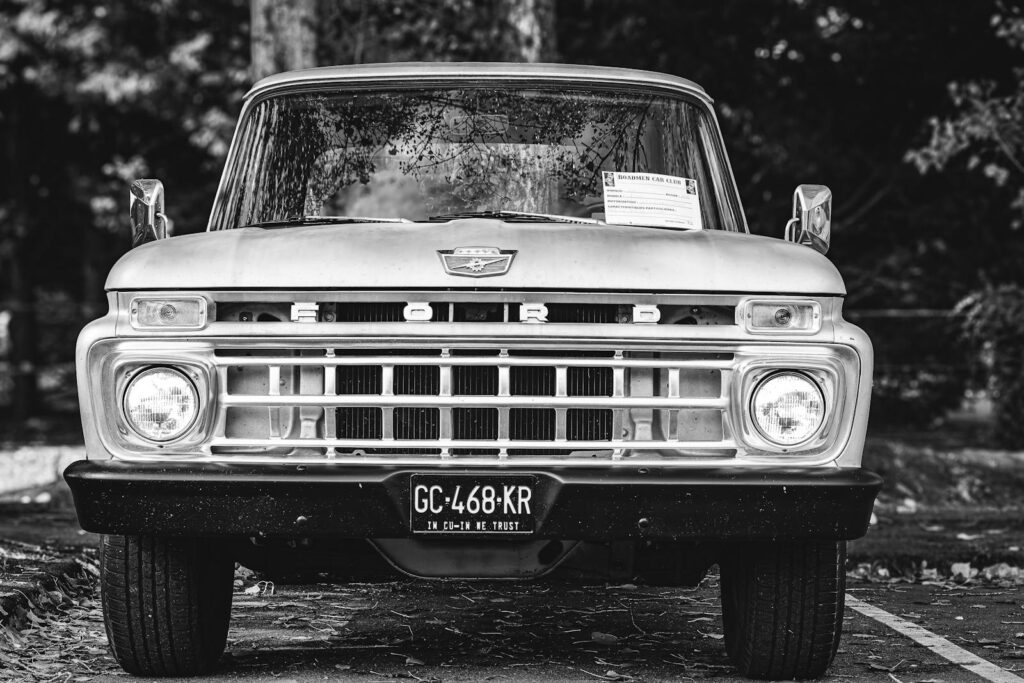
8. **The F-Series Leads the Charge with Fuel Injection**The quest for greater efficiency and more refined performance is a never-ending journey in automotive engineering, and the Ford F-Series has often been at the vanguard. While earlier generations relied on carburetors for fuel delivery, the mid-1980s marked a significant technological leap for Ford’s venerable truck line, introducing a level of precision and sophistication previously unseen in the American pickup market. This evolution was critical in meeting stricter emissions standards and providing a smoother, more reliable driving experience.
During the seventh generation, which launched in 1980, the F-Series’ powertrain line underwent multiple significant revisions. Ford engineers systematically transitioned the engine lineup away from carbureted systems. This transformation began with the 5.0L V8, which was notably fitted with electronic fuel injection as standard equipment for the 1986 model year. This made the F-Series the first American-market pickup truck to offer a fuel-injected engine, setting a crucial precedent for the industry.
The adoption of fuel injection didn’t stop there; it quickly became a standard across the board for the F-Series. The 4.9-liter inline-six engine followed suit for the 1987 models, receiving its own fuel-injected upgrade. By 1988, both the 5.8-liter and the powerful 7.5-liter engines were also equipped with fuel injection, completing the transition. This meant that the F-Series became the first American pickup truck model line to be sold entirely without a carbureted engine option, a testament to Ford’s commitment to modern engineering and its impact on performance and emissions.
Car Model Information: 2024 Ford F-150 XLT
Name: Ford F-Series
Caption: 2022 Ford F-150 Lariat Luxury
Manufacturer: Ford Motor Company
Aka: Ford Lobo (Mexico, 1992–present)
Production: 1948–present
Class: Pickup truck#Full-size pickup truck
Layout: Front-engine, rear-wheel-drive layout,rear-wheel drive
Predecessor: 1941 Ford
Categories: All-wheel-drive vehicles, All Wikipedia articles written in American English, All articles that may contain original research, All articles with unsourced statements, Articles that may contain original research from September 2020
Summary: The Ford F-Series is a series of light-duty trucks marketed and manufactured by the Ford Motor Company since model year 1948 as a range of full-sized pickup trucks — positioned between Ford’s Ranger and Super Duty pickup trucks. Alongside the F-150 (introduced in 1975), the F-Series also includes the Super Duty series (introduced in 1999), which includes the heavier-duty F-250 through F-450 pickups, F-450/F-550 chassis cabs, and F-600/F-650/F-750 Class 6–8 commercial trucks.
The most popular version of the model line is the F-150 pickup truck, currently in its fourteenth generation (introduced for the 2021 model year). From 1953 to 1983, the entry-level F-Series pickup was the 1⁄2 ton F-100. Starting in 1984, the F-150 became the entry-level. The F-150 has a long-running high-performance off-road trim level introduced for 2010, the (SVT) Raptor currently consisting of three generations. Production of the F-150 SVT Raptor ended in 2014 and was succeeded in 2017 by a new F-150 Raptor, which is based on the thirteenth and fourteenth generation F-150.
The F-Series trucks have been developed into a wide range of design configurations. Alongside medium-duty trucks and “Big Job” conventional trucks (the forerunners of the Ford L-series), the model line has been marketed as a chassis-cab truck and a panel van (a predecessor of the Ford E-Series). The F-Series has served as the platform for various full-sized Ford SUVs, including the Ford Bronco, Ford Expedition/Lincoln Navigator, and Ford Excursion. The F-Series has been marketed by its three North American brands: by Mercury as the M-Series (in Canada from 1948 to 1968), and by Lincoln in the 2000s, as the Blackwood and the later Mark LT (2010s for the latter in Mexico only).
Since 1977, the F-Series has remained the best-selling pickup truck line in the United States; it has been the best-selling vehicle overall since 1981. The F-Series has been the best-selling truck in Canada for over 50 years. As of the 2018 model year, the F-Series generated $41 billion (~$50.3 billion in 2024) in annual revenue for Ford. By January 2022, the F-Series models have sold over 40 million units. Currently, Ford manufactures the F-Series in four facilities in the United States.
Get more information about: Ford F-Series
Buying a high-performing used car >>>
Brand: Ford Model: F-Series
Price: $37,999 Mileage: 54,054 mi.
Read more about: The Service Bay Staple: 14 Models That Demand Constant Attention Before 60,000 Miles Are Up
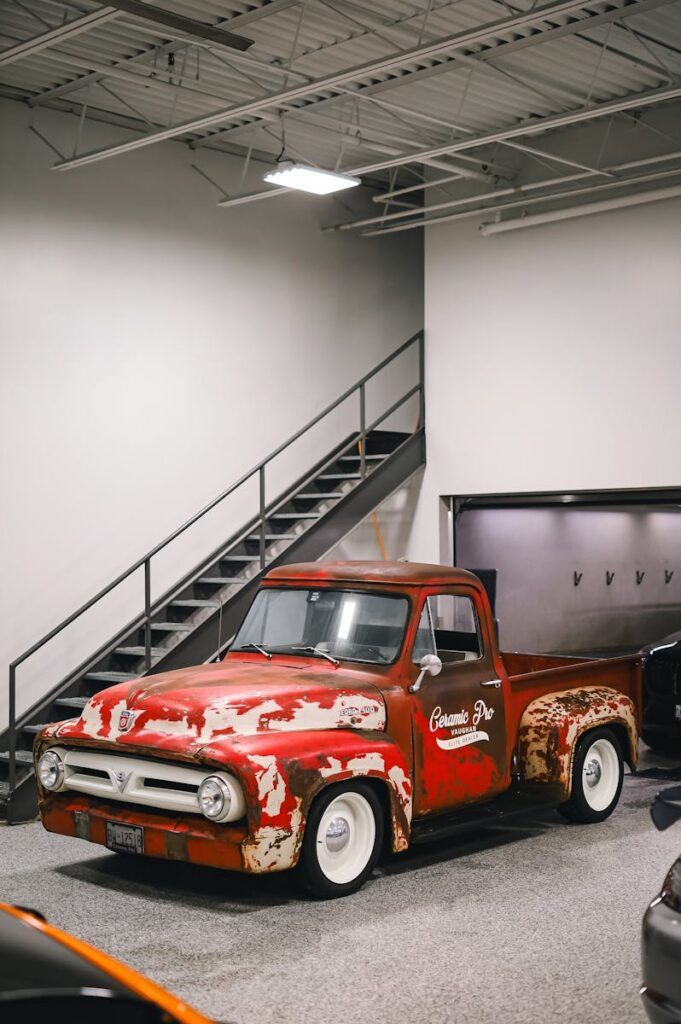
9. **The Game-Changing Arrival of Ford’s Power Stroke Diesel**For truck owners who demanded maximum torque, towing capacity, and legendary durability, diesel engines have always been the power plant of choice. Ford recognized this crucial segment of the market and made significant strides in its diesel offerings, culminating in the introduction of a powertrain that would become synonymous with heavy-duty capability: the Power Stroke diesel. This journey began with strategic partnerships and evolved into an iconic, in-house branded engine.
The first significant step into the modern diesel era for Ford trucks came in 1983, during the seventh generation of the F-Series. A robust 6.9L diesel V8 engine, sourced from a partnership with International Harvester, became an option for the F-250 and F-350 models. This provided the heavy-duty power and efficiency that demanding truck owners required. By 1988, this diesel V8 was increased in size to 7.3 liters, further enhancing its capabilities for serious work.
A pivotal moment arrived for the 1993 model year when a turbocharger became available on the 7.3L “IDI” (Indirect Injection) diesel, significantly boosting its power and efficiency. However, the true revolution occurred in the middle of the 1994 model year, a period often referred to as “1994.5.” It was then that International replaced the IDI engine with an entirely new design: the 7.3L T444E turbo diesel. This groundbreaking engine was the first to be proudly branded as a Ford Power Stroke, marking the birth of a legend.
While sharing its predecessor’s displacement, the new Power Stroke engine was a complete redesign from the ground up, offering superior performance, reliability, and emissions control. The introduction of the Power Stroke diesel solidified Ford’s position in the heavy-duty truck segment, providing a formidable, purpose-built engine that quickly earned a reputation for its relentless power and unwavering dependability, setting a new standard for diesel performance in pickup trucks that continues to this day.
Car Model Information: 2016 Honda Civic EX
Name: Power Stroke engine
Caption: 6.4 Powerstroke as installed in a Ford Super Duty
Aka: Ford Powerstroke
Manufacturer: Navistar International
Production: 1994–present
Configuration: V8 engine,Inline-five engine,V6 engine
Predecessor: International Harvester IDI
Fueltype: Diesel engine
Displacement: 3.0 L
Abbr: on
Order: flip
Bore: 95 mm
Stroke: 105 mm
Block: Cast iron
Head: Cast iron,Aluminum (reverse flow)
Valvetrain: Pushrod engine,DOHC,Multi-valve#Four valves
Timing: Gear (7.3, 6.0, 6.4, 6.7 L),Belt (3.0 L)
Compression: 17.5:1, 18.0:1
Turbocharger: Garrett AiResearch,Variable-geometry turbocharger
Fuelsystem: HEUI,Fuel injection#Direct injection systems
Coolingsystem: Radiator (engine cooling)
Oilsystem: High-pressure oil pump
Weight: convert
Power: convert
Torque: convert
EmissionsControl: Robert Bosch GmbH,Diesel particulate filter,Exhaust gas recirculation
Categories: All articles needing additional references, All articles with dead external links, Articles needing additional references from July 2020, Articles needing additional references from October 2024, Articles with dead external links from December 2017
Summary: Power Stroke, also known as Powerstroke, is the name used by a family of diesel engines for trucks produced by Ford Motor Company and Navistar International (until 2010) for Ford products since 1994. Along with its use in the Ford F-Series (including the Ford Super Duty trucks), applications include the Ford E-Series, Ford Excursion, and Ford LCF commercial truck. The name was also used for a diesel engine used in South American production of the Ford Ranger.
From 1994, the Power Stroke engine family existed as a re-branding of engines produced by Navistar International, sharing engines with its medium-duty truck lines. Since the 2011 introduction of the 6.7 L Power Stroke V8, Ford has designed and produced its own diesel engines. During its production, the Power Stroke engine range has been marketed against large-block V8 (and V10) gasoline engines along with the General Motors Duramax V8 and the Dodge Cummins B-Series inline-six.
Get more information about: Ford Power Stroke engine
Buying a high-performing used car >>>
Brand: Ford Model: Power Stroke Diesel
Price: $13,887 Mileage: 99,270 mi.
Read more about: The Vanishing Roar: 13 Iconic V8 Truck Engines That Disappeared from New Vehicle Specs
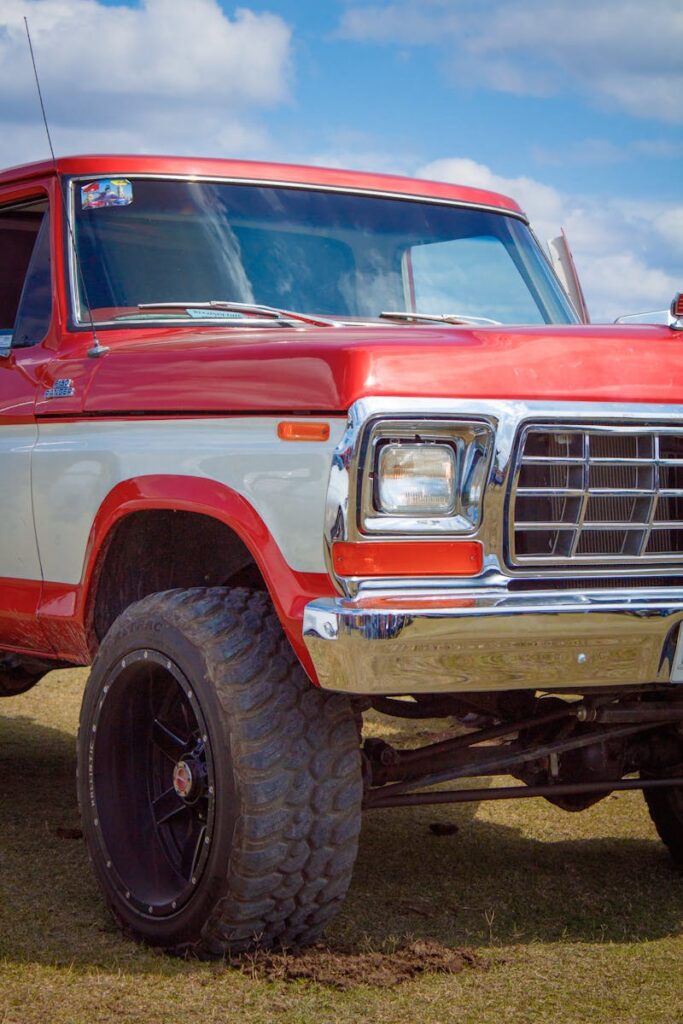
10. **A Strategic Split: The Birth of the Super Duty Line**The evolution of the pickup truck from a utilitarian work vehicle to a versatile, multi-purpose machine for both labor and leisure created a new dynamic in the automotive market. By the 1990s, Ford recognized that a single F-Series lineup could no longer adequately serve the increasingly diverse needs of its customer base. This realization led to one of the most significant strategic decisions in the F-Series’ history: the deliberate segmentation of its truck offerings.
For the 1997 model year, Ford initiated a substantial change, effectively splitting its pickup line into two distinct vehicle families. The F-150 was repackaged with a more contemporary, rounded design, drawing inspiration from the Ford Ranger. This version was specifically targeted at the burgeoning market for dual-purpose vehicles, serving as both a capable work truck and a comfortable daily driver or family vehicle, fulfilling the role of a second car for many households.
Simultaneously, Ford understood the unwavering demand for trucks designed exclusively for heavy-duty work. Instead of trying to make the F-150 fit this role, the company retained the heavier-duty F-250 (rebranded as the F-250 Heavy Duty) and F-350 models, which remained in production through the 1997 model year alongside the new F-150. This parallel marketing strategy allowed Ford to cater to both ends of the pickup truck spectrum effectively.
This strategic split culminated in 1999 with the introduction of the Ford F-Series Super Duty model line. Designed for the most demanding work applications, the Super Duty trucks—comprising the F-250 through F-450 pickups, F-450/F-550 chassis cabs, and eventually F-600/F-650/F-750 commercial trucks—were built on an entirely different chassis, featured distinct powertrains, and boasted their own body designs. This move allowed Ford to offer purpose-built solutions for every type of truck buyer, from the light-duty consumer to the heaviest commercial user, solidifying its dominance across the entire truck market.
Car Model Information: 2016 Honda Civic EX
Name: Ford Super Duty,(F-250/F-350/F-450/F-550/F-600)
Caption: 2020 Ford F-250
Manufacturer: Ford Motor Company
Production: January 5, 1998–present
ModelYears: 1999–present
Class: pickup truck
Layout: Front-engine, rear-wheel-drive layout
Predecessor: Ford F-Series (ninth generation)
Categories: 2000s cars, 2010s cars, All-wheel-drive vehicles, All articles with bare URLs for citations, Articles with bare URLs for citations from August 2024
Summary: The Ford Super Duty (also known as the Ford F-Series Super Duty) is a series of heavy-duty pickup trucks produced by the Ford Motor Company since the 1999 model year. Slotted above the consumer-oriented Ford F-150, the Super Duty trucks are an expansion of the Ford F-Series range, from F-250 to the F-600. The F-250 through F-450 are offered as pickup trucks, while the F-350 through F-600 are offered as chassis cabs.
Rather than adapting the lighter-duty F-150 truck for heavier use, Super Duty trucks have been designed as a dedicated variant of the Ford F-Series. The heavier-duty chassis components allow for heavier payloads and towing capabilities. With a GVWR over 8,500 lb (3,900 kg), Super Duty pickups are Class 2 and 3 trucks, while chassis-cab trucks are offered in Classes 3, 4, 5, and 6. The model line also offers Ford Power Stroke V8 diesel engines as an option.
Ford also offers a medium-duty version of the F-Series (F-650 and F-750), which is sometimes branded as the Super Duty, but is another chassis variant. The Super Duty pickup truck also served as the basis for the Ford Excursion full-sized SUV.
The Super Duty trucks and chassis-cabs are assembled at the Kentucky Truck Plant in Louisville, Kentucky, and at Ohio Assembly in Avon Lake, Ohio. Prior to 2016, medium-duty trucks were assembled in Mexico under the Blue Diamond Truck joint venture with Navistar International.
Get more information about: Ford Super Duty
Buying a high-performing used car >>>
Brand: Ford Model: Super Duty
Price: $13,887 Mileage: 99,270 mi.

11. **The F-Series Embraces Luxury: The Rise of King Ranch and Platinum**For decades, pickup trucks were primarily defined by their utility and ruggedness, often featuring interiors that were functional rather than luxurious. However, as the F-Series evolved and its role expanded beyond the job site, so too did the demand for greater comfort, sophisticated styling, and premium amenities. Ford responded to this trend by introducing trim levels that elevated the F-Series into the realm of luxury, demonstrating its versatility not just as a workhorse, but also as a high-end personal vehicle.
Hints of this evolution appeared early, with the Ranger name first used in 1965 to denote a high-level styling package for F-Series pickups, offering a touch more refinement. Later, in 1994, the Eddie Bauer trim level brought an outdoors-themed, two-tone elegance to the F-150, drawing on its success in Ford’s SUV lines. These early offerings paved the way for more dedicated luxury statements within the F-Series lineup.
A significant leap occurred in 2001 with the introduction of the F-150 King Ranch. This model was born from a unique partnership with the legendary 825,000-acre King Ranch in South Texas, which relied heavily on Ford trucks. The King Ranch F-150 was distinguished by its authentic “Running W” brand badging and an interior upholstered in rich saddle leather, evoking a sense of rugged opulence. It also pioneered the SuperCrew cab as the industry’s first full-size lightweight pickup with a full rear passenger compartment and four full-size doors, blending luxury with family-friendly practicality.
While earlier experiments like the Lincoln Blackwood (2002) and Lincoln Mark LT (2005-2008) explored the concept of a luxury pickup through separate Lincoln branding, it was the F-150 Platinum that truly solidified Ford’s in-house luxury offering. Introduced for 2009, the Platinum effectively replaced the Mark LT in the United States and Canada, adopting many of its upscale features. With its subdued yet sophisticated styling and premium appointments, the Platinum cemented the F-Series’ place at the high end of the market, even expanding to Super Duty trucks by 2013 and becoming a standalone trim by 2017, proving that capability and luxury could coexist harmoniously.
Car Model Information: 2024 Ford F-150 XLT
Name: Ford F-Series
Caption: 2022 Ford F-150 Lariat Luxury
Manufacturer: Ford Motor Company
Aka: Ford Lobo (Mexico, 1992–present)
Production: 1948–present
Class: Pickup truck#Full-size pickup truck
Layout: Front-engine, rear-wheel-drive layout,rear-wheel drive
Predecessor: 1941 Ford
Categories: All-wheel-drive vehicles, All Wikipedia articles written in American English, All articles that may contain original research, All articles with unsourced statements, Articles that may contain original research from September 2020
Summary: The Ford F-Series is a series of light-duty trucks marketed and manufactured by the Ford Motor Company since model year 1948 as a range of full-sized pickup trucks — positioned between Ford’s Ranger and Super Duty pickup trucks. Alongside the F-150 (introduced in 1975), the F-Series also includes the Super Duty series (introduced in 1999), which includes the heavier-duty F-250 through F-450 pickups, F-450/F-550 chassis cabs, and F-600/F-650/F-750 Class 6–8 commercial trucks.
The most popular version of the model line is the F-150 pickup truck, currently in its fourteenth generation (introduced for the 2021 model year). From 1953 to 1983, the entry-level F-Series pickup was the 1⁄2 ton F-100. Starting in 1984, the F-150 became the entry-level. The F-150 has a long-running high-performance off-road trim level introduced for 2010, the (SVT) Raptor currently consisting of three generations. Production of the F-150 SVT Raptor ended in 2014 and was succeeded in 2017 by a new F-150 Raptor, which is based on the thirteenth and fourteenth generation F-150.
The F-Series trucks have been developed into a wide range of design configurations. Alongside medium-duty trucks and “Big Job” conventional trucks (the forerunners of the Ford L-series), the model line has been marketed as a chassis-cab truck and a panel van (a predecessor of the Ford E-Series). The F-Series has served as the platform for various full-sized Ford SUVs, including the Ford Bronco, Ford Expedition/Lincoln Navigator, and Ford Excursion. The F-Series has been marketed by its three North American brands: by Mercury as the M-Series (in Canada from 1948 to 1968), and by Lincoln in the 2000s, as the Blackwood and the later Mark LT (2010s for the latter in Mexico only).
Since 1977, the F-Series has remained the best-selling pickup truck line in the United States; it has been the best-selling vehicle overall since 1981. The F-Series has been the best-selling truck in Canada for over 50 years. As of the 2018 model year, the F-Series generated $41 billion (~$50.3 billion in 2024) in annual revenue for Ford. By January 2022, the F-Series models have sold over 40 million units. Currently, Ford manufactures the F-Series in four facilities in the United States.
Get more information about: Ford F-Series
Buying a high-performing used car >>>
Brand: Ford Model: F-Series
Price: $37,999 Mileage: 54,054 mi.
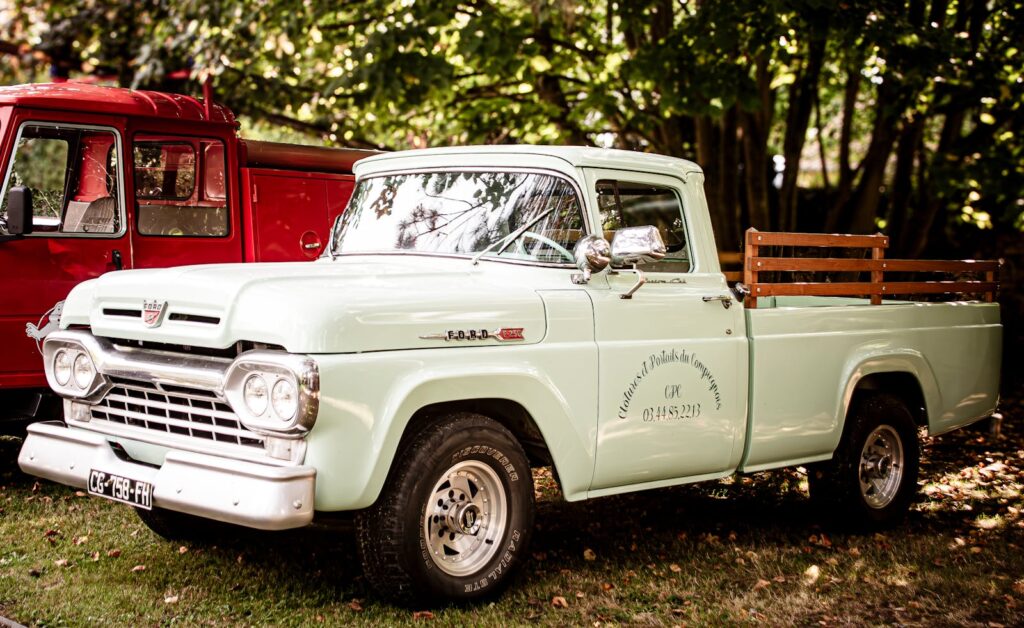
12. **Unleashing the Beast: The Rise of the SVT Raptor**While the F-Series has always been synonymous with capability, Ford recognized an emerging niche for high-performance trucks that could dominate not just the pavement, but also the most challenging off-road terrains. This insight led to the creation of a specialized model that completely redefined the boundaries of production truck performance, carving out a legendary status for itself among enthusiasts: the SVT Raptor.
Introduced for the 2010 model year, the SVT Raptor was the second F-Series truck to receive the expert touch of Ford’s Special Vehicle Team (SVT). Unlike the earlier SVT Lightning, which focused on enhanced on-road performance, the Raptor was engineered from the ground up for extreme off-road capability. Its inspiration was clear: a Baja 1000 desert racing truck, reimagined as a road-legal production vehicle. This radical approach set it apart from anything else on the market.
The Raptor shared only its cab with the standard F-150, a testament to the extensive modifications it underwent. It featured a long-travel suspension system, massive tires, and a model-exclusive front fascia that exuded an aggressive, purpose-built aesthetic. A distinctive design cue was the replacement of the traditional Ford Blue Oval emblem on the grille with bold “FORD” lettering, a visual statement of its unique identity and raw power.
The Raptor continued its evolution, dropping the ‘SVT’ prefix for its second generation, released in 2017. This iteration, based on the thirteenth-generation F-Series, embraced the significant shift to an aluminum-intensive body, shedding over 500 pounds while enhancing performance. Its V8 engine of the previous generation was replaced by a potent twin-turbocharged V6 unit, showcasing Ford’s commitment to both power and advanced engine technology. The third-generation Raptor, coinciding with the fourteenth-generation F-Series in 2021, pushed boundaries further with a switch to coil springs for the rear suspension, even larger tires, and eventually, the return of a V8 engine option in 2023, ensuring the Raptor remains the apex predator of the off-road truck world.
Car Model Information: 2016 Honda Civic EX
Name: Raptor
Logo: Ford raptor logo.png
LogoSize: 200
Caption: Ford F-150 SVT Raptor (first generation)
Producttype: Pickup truck
Currentowner: Ford Motor Company
Country: United States
Introduced: [object Object]
Markets: Worldwide
Categories: 2010s cars, 2020s cars, All articles needing additional references, All articles with unsourced statements, Articles needing additional references from January 2025
Summary: The Raptor is a nameplate used by Ford for its high-performance pickup trucks and SUVs. In use since the 2010 model year, the Raptor is designated as the highest-performance version of the F-150, Ranger and Bronco. Drawing its name from both bird of prey and the velociraptor, the model line is intended as a street-legal counterpart of an off-road racing trophy truck. The F-150 Raptor is currently in its third generation; the Ranger Raptor was introduced in 2019 (in markets outside of North America) while the Bronco Raptor was released in late 2021.
Optimized for off-road use, the Raptor is fitted with four-wheel drive as standard equipment, a mid-travel suspension system, and all-terrain tires. The model is also equipped with the most powerful engines available in the F-150/Ranger lines. Along with wider fenders, the Raptor is fitted with its own grille, replacing the Ford Blue Oval emblem with large “FORD” lettering in the grille.
Get more information about: Ford Raptor
Buying a high-performing used car >>>
Brand: Ford Model: SVT Raptor
Price: $13,887 Mileage: 99,270 mi.
Read more about: The Road Ahead: 14 Game-Changing Cars, Trucks, and SUVs We Can’t Wait to Drive in 2026!
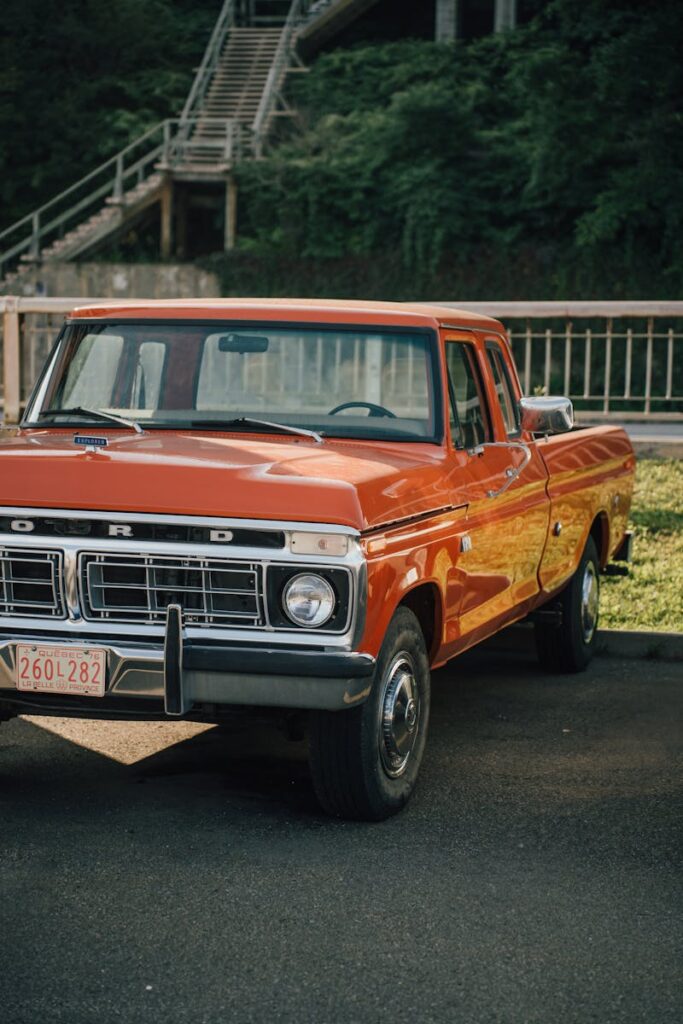
13. **The Aluminum Revolution: Lighter, Stronger F-150 for the Modern Age**For decades, steel had been the undisputed material king in truck manufacturing, synonymous with strength and durability. However, as demands for increased fuel efficiency, payload capacity, and performance grew, Ford embarked on a daring and industry-leading revolution, fundamentally transforming how its flagship F-Series trucks were constructed. This pivotal moment arrived with the introduction of the thirteenth-generation F-Series, ushering in an era of lightweighting and advanced materials.
Previewed by the innovative Ford Atlas concept vehicle at the 2013 Detroit Auto Show, the 2015 F-150 made headlines for its extensive use of aluminum. This wasn’t merely a minor substitution; Ford replaced traditional steel body stampings with aluminum across nearly every exterior panel, with the sole exception of the firewall. This bold engineering choice resulted in a remarkable reduction of nearly 750 pounds in curb weight, without compromising the truck’s impressive exterior footprint or its inherent robustness.
Crucially, while the body panels transitioned to aluminum, the foundation of the truck remained a high-strength steel frame, ensuring the structural integrity and towing capabilities that F-Series owners relied upon. To rigorously test the durability of this aluminum-intensive design during its development phase, Ford subjected camouflaged prototypes to extreme conditions, including competing in the grueling Baja 1000 endurance race, where the vehicles successfully finished, proving the resilience of the new construction.
Beyond its innovative material use, the 2015 F-150 also broke new ground in technology, becoming the first pickup truck to offer adaptive cruise control. This advanced driver-assistance system utilized radar sensors to maintain a set following distance from the vehicle ahead, automatically adjusting speed as needed. The aluminum revolution not only improved efficiency and performance but also demonstrated Ford’s unwavering commitment to leading the industry through brave engineering decisions, ensuring the F-Series remained at the forefront of innovation.
Car Model Information: 2024 Ford F-150 XLT
Name: Ford F-Series
Caption: 2022 Ford F-150 Lariat Luxury
Manufacturer: Ford Motor Company
Aka: Ford Lobo (Mexico, 1992–present)
Production: 1948–present
Class: Pickup truck#Full-size pickup truck
Layout: Front-engine, rear-wheel-drive layout,rear-wheel drive
Predecessor: 1941 Ford
Categories: All-wheel-drive vehicles, All Wikipedia articles written in American English, All articles that may contain original research, All articles with unsourced statements, Articles that may contain original research from September 2020
Summary: The Ford F-Series is a series of light-duty trucks marketed and manufactured by the Ford Motor Company since model year 1948 as a range of full-sized pickup trucks — positioned between Ford’s Ranger and Super Duty pickup trucks. Alongside the F-150 (introduced in 1975), the F-Series also includes the Super Duty series (introduced in 1999), which includes the heavier-duty F-250 through F-450 pickups, F-450/F-550 chassis cabs, and F-600/F-650/F-750 Class 6–8 commercial trucks.
The most popular version of the model line is the F-150 pickup truck, currently in its fourteenth generation (introduced for the 2021 model year). From 1953 to 1983, the entry-level F-Series pickup was the 1⁄2 ton F-100. Starting in 1984, the F-150 became the entry-level. The F-150 has a long-running high-performance off-road trim level introduced for 2010, the (SVT) Raptor currently consisting of three generations. Production of the F-150 SVT Raptor ended in 2014 and was succeeded in 2017 by a new F-150 Raptor, which is based on the thirteenth and fourteenth generation F-150.
The F-Series trucks have been developed into a wide range of design configurations. Alongside medium-duty trucks and “Big Job” conventional trucks (the forerunners of the Ford L-series), the model line has been marketed as a chassis-cab truck and a panel van (a predecessor of the Ford E-Series). The F-Series has served as the platform for various full-sized Ford SUVs, including the Ford Bronco, Ford Expedition/Lincoln Navigator, and Ford Excursion. The F-Series has been marketed by its three North American brands: by Mercury as the M-Series (in Canada from 1948 to 1968), and by Lincoln in the 2000s, as the Blackwood and the later Mark LT (2010s for the latter in Mexico only).
Since 1977, the F-Series has remained the best-selling pickup truck line in the United States; it has been the best-selling vehicle overall since 1981. The F-Series has been the best-selling truck in Canada for over 50 years. As of the 2018 model year, the F-Series generated $41 billion (~$50.3 billion in 2024) in annual revenue for Ford. By January 2022, the F-Series models have sold over 40 million units. Currently, Ford manufactures the F-Series in four facilities in the United States.
Get more information about: Ford F-Series
Buying a high-performing used car >>>
Brand: Ford Model: F-150
Price: $39,997 Mileage: 45,515 mi.

14. **Electrifying the Workhorse: The Groundbreaking F-150 Lightning**Throughout its storied history, the Ford F-Series has continuously adapted to meet the evolving needs of its customers and the demands of a changing world, from the post-war era to the age of digital transformation. The latest and arguably most groundbreaking chapter in this saga is the F-Series’ pivot towards electrification, signaling a monumental shift for America’s best-selling vehicle and setting a new course for the future of pickup trucks.
The journey towards an electric F-Series began publicly at the 2019 Detroit Auto Show, where Ford announced its ambitious intention to produce a fully-electric light truck. This wasn’t a mere concept; rigorous testing of prototype mules, built on an existing F-150 chassis, commenced throughout 2019. These tests included a spectacular, record-setting demonstration tow of an astonishing 1,250,000 pounds (570,000 kg) on rails, unequivocally showcasing the immense power and capability that an electric F-Series could offer.
The culmination of this pioneering effort arrived on May 19, 2021, when Ford officially unveiled its fully-electric pickup truck, proudly marketing it as the Ford F-150 Lightning. The choice to resurrect the iconic ‘Lightning’ nameplate, previously associated with high-performance gasoline models, underscored the vehicle’s intent to deliver both potent performance and cutting-edge technology, all while maintaining the F-Series’ legendary utility.
The F-150 Lightning represents more than just a new powertrain option; it embodies Ford’s vision for a sustainable yet highly capable future. With innovations like its powerful electric motor, advanced battery technology, and intelligent features, it carries forward the F-Series’ enduring legacy of innovation. This fully electric workhorse is poised to revolutionize how we perceive and utilize pickup trucks, proving that Ford’s dedication to adaptability, foresight, and delivering on customer needs remains as strong as ever, ensuring the F-Series continues to be a defining force in the automotive landscape for generations to come.
Car Model Information: 2016 Honda Civic EX
Name: Ford F-150 Lightning
Manufacturer: Ford Motor Company
Related: Ford F-Series (fourteenth generation)
Assembly: Dearborn, Michigan
ModelYears: 2022–present
Production: April 2022 – present
Layout: Dual-motor, four-wheel-drive
Platform: Ford T platform#T3
Class: Pickup truck
Sp: us
Battery: lithium-ion
Motor: permanent magnet motor
ElectricRange: Unbulleted list
Abbr: on (extended battery)
Powerout: Unbulleted list
Charging: Unbulleted list
Designer: Unbulleted list
Wheelbase: cvt
Length: cvt
Width: cvt
Height: cvt
Weight: cvt
Categories: All Wikipedia articles in need of updating, All Wikipedia articles written in American English, All articles containing potentially dated statements, All articles with unsourced statements, Articles containing potentially dated statements from June 2022
Summary: The Ford F-150 Lightning is a battery electric full-size light duty truck unveiled by the Ford Motor Company in May 2021 as part of the fourteenth generation Ford F-Series. Four models have been announced, and all models initially will be dual-motor, four-wheel-drive, with EPA range estimates of 240–320 mi (390–510 km). A commercial-grade version of the all-wheel drive (AWD) truck is sold in the United States, with higher-power/trim/range models also sold. The F-150 Lightning began production on April 26, 2022.
Get more information about: Ford F-150 Lightning
Buying a high-performing used car >>>
Brand: Ford Model: F-150 Lightning
Price: $13,887 Mileage: 99,270 mi.
From its ‘Bonus-Built’ origins to its electrified future, the Ford F-Series has not merely kept pace with automotive progress; it has actively shaped it. Each turning point, every innovation, from the adoption of three-digit nomenclature and the Twin I-Beam suspension to the strategic segmentation with Super Duty, the embrace of luxury trims, the off-road prowess of the Raptor, and the revolutionary shift to aluminum and electric powertrains, tells a story of relentless improvement. The F-Series stands as a testament to Ford’s unwavering commitment to utility, performance, and understanding the evolving demands of its diverse customer base. It’s more than just a truck; it’s a dynamic, living legend, continuously reinventing itself while staying true to the core values that have made it America’s undisputed champion for decades.


